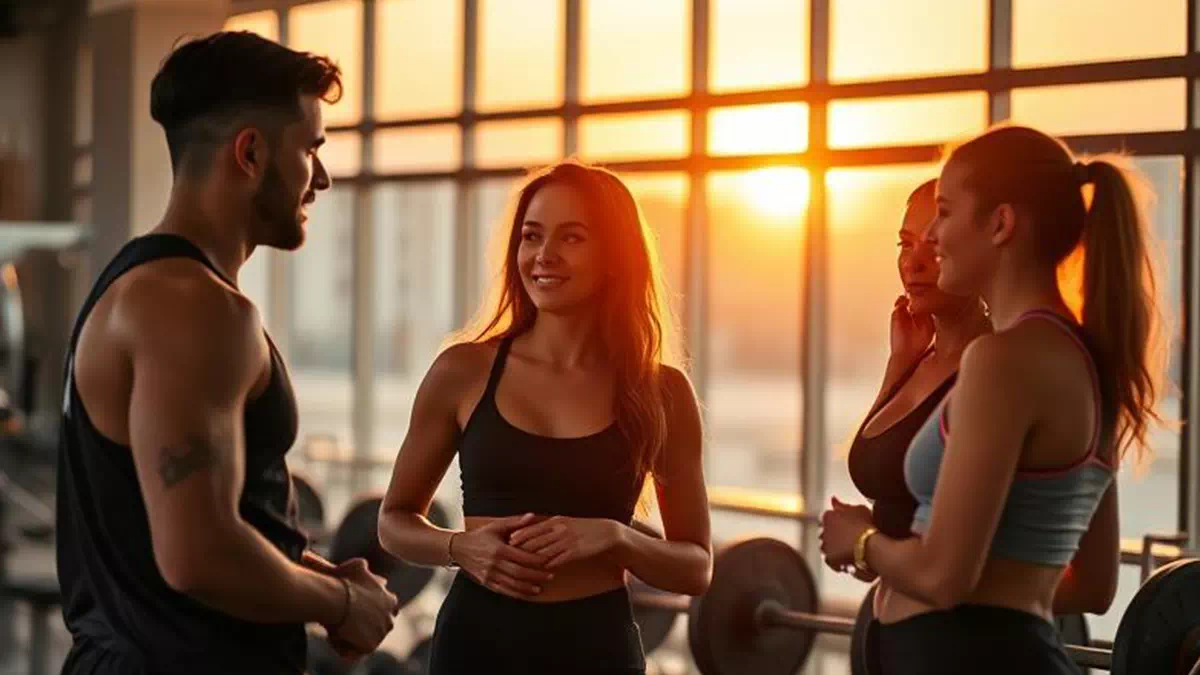How to Talk to People at the Gym

#1 More Conversation Starters
"Do you know if the [spin studio/yoga room] is open right now?"
A practical question about a specific area of the gym. It's straightforward and can lead to a brief informational exchange.

"I've been trying to find a good [podcast/playlist] for my workouts. Do you have any recommendations?"
Asking for a personal recommendation related to gym activities. It's a low-pressure way to learn about their preferences and potentially share your own.

"Are you working with a trainer here, or just doing your own thing? Your routine looks really [effective/organized]."
A polite inquiry about their workout approach, combined with a compliment. It can lead to a discussion about their fitness journey.

"Excuse me, do you know if this [machine/area] is free?"
A direct, low-risk question about gym equipment availability that often naturally leads to further conversation if the person is open to it.

"I'm trying to get into [specific type of fitness, e.g., powerlifting/yoga]. Any advice for a beginner?"
Expressing a specific fitness goal and asking for guidance. It shows humility and a desire to learn from someone more experienced.

"Hey, how many sets do you have left on this [machine]?"
A common, polite query for sharing equipment. It’s a practical question that opens the door for a brief interaction and potential follow-up if they're receptive.

"Sorry to bother you, but do you happen to know where the [water fountain/towels/restrooms] are?"
A simple request for help or information. Most people are willing to assist, and it provides a natural segue into a quick chat.

"I totally forgot my [headphones/towel] today! Does that ever happen to you?"
A relatable, slightly self-deprecating comment about a common gym mishap. It can create a sense of shared experience and a quick, lighthearted exchange.

"Wow, you're really pushing some weight! What's your [personal best/goal] for that exercise?"
A compliment on their strength or performance, inviting them to share their progress or goals. This can be motivating and open a conversation about fitness.

"Are you training for something specific, like a [marathon/competition]?"
A guess based on their visible effort or type of training. While a guess, it shows you're paying attention and can lead to a discussion about their fitness goals.

"That looks like a really intense workout! What's your motivation for coming to the gym so consistently?"
A direct compliment on their intensity, followed by an open-ended question about their motivation. It can lead to a more personal discussion.

"The gym's really [busy/quiet] today, isn't it?"
A comment on a shared observation about the gym environment. It's neutral and can easily be agreed upon, leading to a brief exchange.

"Mind if I work in with you on this [machine]?"
A direct and practical request for sharing equipment. It requires interaction and can lead to a conversation about shared exercise.

"Ugh, this [exercise] is always a killer! What's your favorite way to recover?"
A relatable comment about a challenging exercise. It creates a shared experience and invites them to offer advice or share their routine.

"Are you having trouble with that [equipment]? Sometimes this one can be a bit [tricky/stuck]."
A helpful and empathetic observation if you notice someone struggling slightly with equipment. It offers assistance without being overbearing.

"This [music/TV show] is really getting me through my workout today! What are you listening to/watching?"
A comment about the gym's background entertainment, inviting them to share their own preferences.

"I'm trying to figure out how to do [specific exercise]. Do you have any tips?"
Asking for advice or guidance. People generally enjoy sharing their expertise, and it shows you value their knowledge.

"Excuse me, I overheard you talking about [topic relevant to gym, e.g., a specific workout/new class]. Could you tell me more about it?"
Leveraging a previously overheard, non-private conversation topic. It shows you're paying attention and interested in something they're already discussing.

"I like your [shoes/water bottle/gym bag]! Where did you get it?"
A light compliment on a specific item. It's low-pressure and often leads to a quick discussion about the item and potentially more.

"That's a great [exercise/form] you've got there. What's your secret?"
A genuine compliment on their workout or technique. It’s positive and invites them to share their knowledge or experience, which people often enjoy.

"I've seen you here before, you're always working hard! What brings you in so often?"
Acknowledging their consistent presence and effort. It's a mild compliment and shows you've noticed them in a non-intrusive way, inviting them to share their motivation.

"(Drop a small item like a pen or towel nearby) Oh, excuse me! [Pick it up.] Thanks."
A subtle, non-verbal way to initiate proximity and a brief, polite exchange without putting immediate pressure on a conversation.

Difficulty Score
40%
